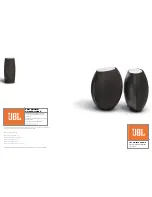
SPECIFICATION, Model No: ....................................................... SUPERMIG230
Welding Current: .....................................................................................30 - 230A
Wire Capacity - steel: ................................................................................ 5 - 15kg
Duty Cycle: ..........................................................100%@67.8A, 60%@87.5A, 15%@175A
Cooling System: ..................................................................................... Forced Air
Spot Welding timer ............................................................................................Yes
Gas Type: .................................................................CO², Argon & CO²/Argon mix
Torch: ...........................................................................Euro Non Live - BINZEL ®
Power Input ...........................................................................................230V - 1ph
Absorbed power ......................................................................................... 8.05kW
Case size ...................................................................................................... Large
Weight ..........................................................................................................49.5kg
NOTE!
The heating tests have been carried out at ambient temperature.
The duty cycle at 40°C has been determined by simulation.
3. ASSEMBLY & PREPARATION
3.1
ASSEMBLING GAS PLATFORM:
(Refer to 'P' in figs.1 & 2) Turn the
welder upside down on a smooth non-abrasive surface. The welder
should be turned over by two people as it is very heavy.
3.1.1
The gas platform is held in place with 7 M6 x 10mm bolts requiring a
10mm spanner. The casing has pre-prepared threaded inserts ready
to take the fixings. Place the platform onto the base of the welder with
the axle uppermost and fix in place with 3 bolts. See (X) in fig.1 below.
3.1.2
Insert the remaining four bolts through the two fixing flanges laying on
the back of the welder. See (X) in fig.2. Finally, tighten all 7 bolts.
3.2
ASSEMBLING THE WHEELS:
(Refer to fig.1)
3.2.1
Slide a wheel (Y) over each end of the solid axle attached to the gas
platform. Slide a washer over each end of the axle and insert a split
pin (Z) through the hole in each end of the axle and bend it over to
retain the wheels.
3.2.2
Bolt the two castors (W) to the front end of the base using the 8 bolts
provided. The casing has pre-prepared threaded inserts ready to take
the fixings. See fig.1.
3.2.3
With the assistance of another person turn the welder the right way up
onto its wheels.
3.3
ASSEMBLING THE EARTH CLAMP:
(Refer to fig.3) Feed the eyelet on the
end of the earth lead through the hole in the clamp arm as shown in fig.3A.
3.3.1
Drop the eyelet over the terminal and firmly fix with the bolt provided as
shown in fig.3B.
fig.3
3.4
INSTALLING THE GAS CYLINDER.
The welder is designed to
accommodate small or medium sized gas cylinders up to a maximum
height of 1000mm. Contact your local Gas dealer for supply.
3.4.1
Place the gas cylinder onto the rear platform of the welder. See fig.2-P.
Place one end of the fixing chain into one side of the retaining
bracket. Draw the chain around the cylinder and place it into the slot
on the other side of the bracket leaving as little slack in the chain as
possible.
3.5
ATTACHING THE REGULATOR.
Whichever gas you are using it is
advisable to 'crack' the cylinder valve before attaching the regulator.
This means opening and closing the valve very quickly in order to
blow away any dust and dirt that may have accumulated in the gas
outlet. Stand to one side whilst doing this.
3.5.1
CO² GAS.
Ensure that the threads on the gas bottle are undamaged
and free of oil and grease before attaching the regulator. (Oil or
grease in the presence of high pressure gases can be explosive).
Ensure that the regulator has an undamaged gasket fitted. The
regulator will screw directly to the threads on the gas bottle. Tighten
with a spanner.
3.5.2
ARGON GAS OR ARGON MIxTURES.
Cylinders containing Argon
gas and Argon mixtures have a female thread and will require the use
of a Bull Nose Adaptor to attach the regulator to the cylinder as
indicated in fig.4. Ensure that the threads on the gas bottle are
undamaged and free of oil and grease before attaching the regulator.
(Oil or grease in the presence of high pressure gases is explosive).
Fit the Bull Nose Adaptor to the cylinder first and tighten with a
spanner. Ensure that the regulator has an undamaged gasket before
fitting onto the Bull Nose Adaptor. Tighten with a spanner.
3.5.3
Slide a clip over each end of the gas hose supplied. Push one end
of the hose onto the regulator outlet and the other end over the gas
inlet spigot on the back of the welder. See fig.2G. Tighten the clips
to ensure a good seal.
3.5.4
Close the regulator valve by turning it anti-clockwise before opening
the cylinder valve. Stand to one side when opening the cylinder valve.
3.5.5
Set the regulator flow rate to 5-8 litres/min depending on the
material to be welded, and whether there are draughts which are
strong enough to disturb the gas flow.
fig.4
Original Language Version
fig.1
fig.2
3.2.4
The Gas Cylinder Bracket (Item 36) can be found stored inside the wire
feed compartment, in the top corner above the wire feed assembly.
Remove from this location and fix to the rear of the machine.
SUPERMIG230 Issue No: 3(L) - 24/04/14
© Jack Sealey Limited

























